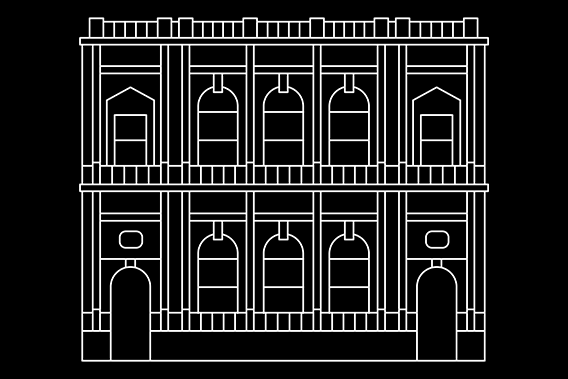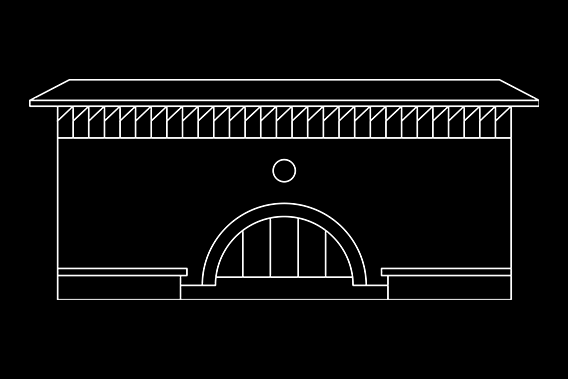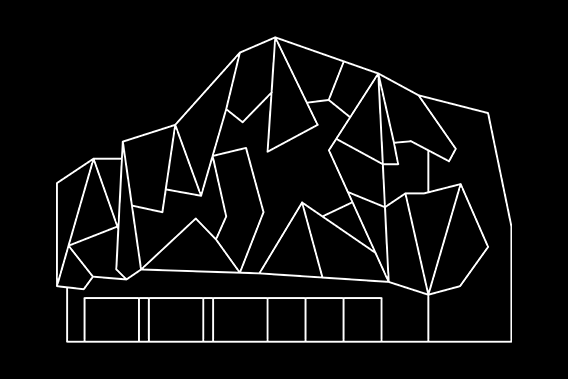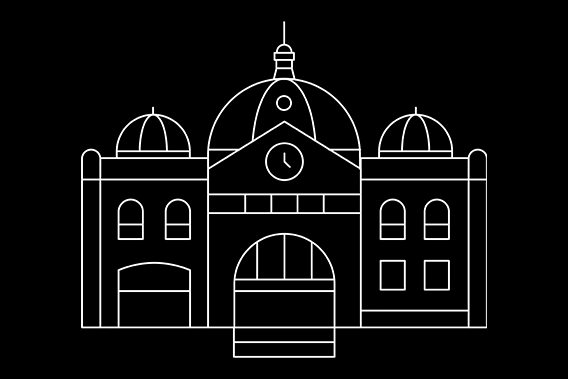Exploring Melbourne's Architectural Icons

In celebrating 150 years of built environment education at the University of Melbourne, the iconography chosen for our BE—150 program builds on an aspiration to (re)imagine the landscapes and urban forms of Melbourne’s future. The BE—150 apparel range recognises and celebrates significant landmarks that contribute to the unique character of our city’s urban form.
Curated for their connection to the University, compelling design or significance to Melbourne’s identity, the building silhouettes used in the visual representation of the BE—150 are cultural heritage monuments that inspire progressive thought and innovative design.
We hope you enjoy the BE—150 apparel range and join us on an exploration our rich history and discussions on impact, achievement and the future of our disciplines.
Silhouette designs by the Melbourne-based design firm, Studio Binocular.
Century Building 129 Swanston St, Melbourne VIC 3000
The iconic Century Building, with its bold white vertical lines and blue-tinted glass, was designed in 1936 by prominent Melbourne architect Marcus Barlow whose son went on to become an alumni of the Faculty. Drawing on American precedents, like its cousin, Barlow’s Manchester Unity Building (1933), in the same city block, it was the first building in Melbourne to be fully air conditioned and originally housed a cinema in the basement level, now used as a live music venue. |  |
Alkira House 18 Queen St, Melbourne VIC 3000
Widely regarded as one of Victoria’s most impressive examples of Jazz Moderne Art Deco architecture, Alkira House, designed by JH Wardrop in 1937, is recognisable due to its façade of black and green faience (a glazed terra cotta tiling) with a central continuous panel of glass bricks. |  |
Bank of New South Wales (Joseph Reed) Façade Concrete Lawn, University of Melbourne, Parkville VIC 3010
Built for the Bank of New South Wales in 1858-59 and originally located on Collins St, the Joseph Reed-designed façade is an important early example of a commercial building dating from Victoria’s gold rush era. Moved to the University’s Parkville campus in 1932, the structure now stands as a focal point for the Glyn Davis Building, home to the Faculty of Architecture, Building and Planning and the Melbourne School of Design. |  |
National Gallery of Victoria 180 St Kilda Rd, Melbourne VIC 3000
The National Gallery of Victoria is recognised today as the largest, oldest and most frequented art museum in Australia. Designed by alumnus Roy Grounds (BArch, 1951) and completed in 1968, the building stands as a pioneering work of modern architecture in Victoria and is easily recognised by its single archway entrance and waterfall window. |  |
Federation Square Swanston St & Flinders St, Melbourne VIC 3000
Defined by its ‘cranked’ angular geometrics and scattered vertical ‘shards’, Federation Square was a source of public contention upon its reveal in 2002 but stands today as an iconic landmark of Melbourne. The buildings’ designers were a consortium of architects (LAB/Bates Smart) including the University’s Chair of Architectural Design Professor Donald Bates of LAB Architects. |  |
Flinders Street Station Swanston St & Flinders St, Melbourne VIC 3000
Recognised as the busiest train station in Australia, Flinders Street Station’s design by Fawcett and Ashworth, completed 1901-10, is considered unique in Victoria due to its influence from both Edwardian Baroque and French Renaissance mode of design. In 2011 a group of University of Melbourne students won the People’s Choice Award after the Victorian Government called for designs to restore and rejuvenate the existing façade. |  |
We are currently hard at work producing a range of BE – 150 themed gifts and apparel featuring these Melbourne buildings. A number of samples, produced by the MSD Workshop team, are on display in the ground floor lobby of our building.
We look forward to experimenting with these motifs, applying them to different mediums and contexts. Keep an eye out for BE—150 apparel including earrings, t-shirts, pins, badges, scarves and who knows what else?
Register online to receive updates on the range of apparel as it is released.








